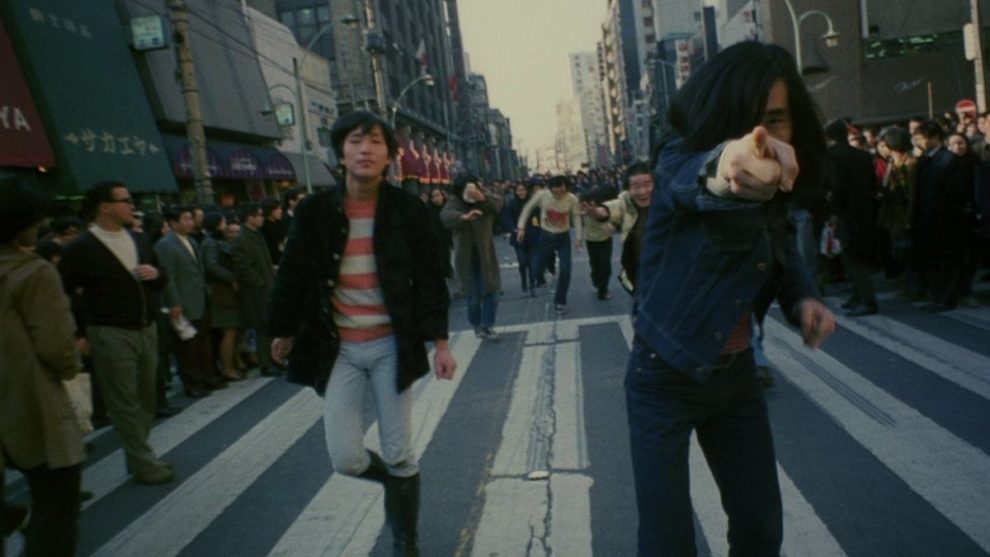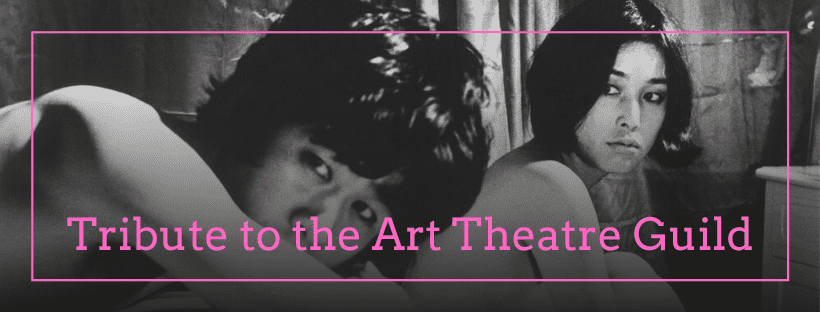by Swapnil Dhruv Bose
One of the most striking films to have come out of the Japanese New Wave, “Throw Away Your Books, Rally in the Streets” is avant-garde writer turned filmmaker Shūji Terayama's debut feature and is based on his eponymous book. Although he went on to make other masterpieces like “Pastoral: To Die in the Country” (1974) and “Glass Labyrinth” (1979), this brilliant work of experimental anarchy remains the apotheosis of Terayama's unapologetically original artistic vision.
Buy This Title
Following in the footsteps of Jean-Luc Godard and anticipating the non-linear surrealness of directors like David Lynch, Terayama constructs unforgettable vignettes which blind the viewer with their pathos. It is almost pointless to talk about the film's plot because time and causality are rendered insignificant when confronted with the underlying spiritual anguish. The protagonist introduces himself to us in a spectacular opening monologue where he stares straight into the camera and into our eyes. “Nobody knows who I am. My name's never been in the papers. I've no name, no money and I'm dirty,” he admits. “Nobody knows who I am.” This is the central theme of “Throw Away Your Books, Rally in the Streets”: the eternally doomed quest for recognition in an uncaring world. As the movie progresses, we forget his unimportant name and he is only credited as the universal “Me”.
Terayama makes us watch as the protagonist stumbles from one tragedy into another, desperately searching for some kind of subjectivity. His father is the local pervert who sexually harasses young girls and has no money, his sister is trapped in a quasi-bestial relationship with her pet rabbit and his grandmother is a lying shoplifter who thinks of nobody but herself. The film employs recurring acts of violation in order to facilitate the genesis of an atmospheric anxiety which does not go away even after it ends. The protagonist dreams of becoming a “human aeroplane” and flying away from his suffocating life to the hypocritical promises of America. However, he flails around in his own Freudian nightmares and witnesses the slow unravelling of his family.
The greatest achievement of “Throw Away Your Books, Rally in the Streets” is its ability to engage in smart discourse with the art form. This is further highlighted by the fascinating visual narrative which cinematographer Masayoshi Sukita uses to depict the festering frustrations. Oscillating between the apparent realism of colour photography and the psychedelic as well as philosophical implications of monochromatic shots, the movie becomes a protest against the conventions of cinematic storytelling. Moreover, the camera frantically swerves in some sequences while rock music plays in the background and the protagonist attempts to run away from something or the other. This energy is so beautifully anarchic that it threatens to destabilise the medium itself.
Since Terayama's artistic journey is greatly informed by the world of literature, his cinematic experiments are also very literary in nature. He uses “Godardesque” inter-titles to quote the likes of Vladimir Mayakovsky, André Malraux and Erich Fromm but these instances are not mindless imitations of the French New Wave. Terayama tells his viewers that “the city is an open book. Write on its infinite margins!” Accordingly, he scribbles his intertitles on football fields, streets and walls as an act of rebellion against the existential vacuum created by modernity. It is his way of insisting that he exists. Conversely, he also laments the loss of individual identity by recording the confessions of seemingly random people who share the same perverse desires and the same mediocre preoccupations. Nuanced in his approach and avant-garde in his execution, Terayama proves that auteur is an author above everything else.
The standout performance is undoubtedly delivered by Hideaki Sasaki who is brilliant as the nameless protagonist. Although there can be some debate whether he really is the protagonist or whether the main character of the story is the rapidly changing cityscape of Tokyo, it cannot be denied that Sasaki manages to be the perfect representative of the disillusioned youth who carries out the film's scathing attack on the Japanese society of the ‘70s and its blind obsession with America. More interestingly, he is the one who constantly kicks down the fourth wall and addresses the audience with contempt. He reminds them that this is a work of fiction and that he will cease to exist the moment the screen turns blank. “The film will be over soon and nobody will remember me,” he says with a sombre voice but that isn't the case at all.
Even though almost 50 years have passed since it first came out, Terayama's magnum opus is still a vital part of the history of Japanese cinema and the epitome of transgressive metafiction in the realm of cinema. “Throw Away Your Books, Rally in the Streets” is a memorable critique of the redundancy of public institutions which urges us to embrace the dialectics of the real world instead.

















